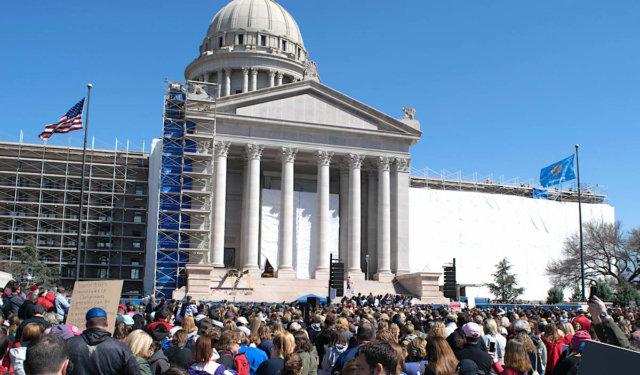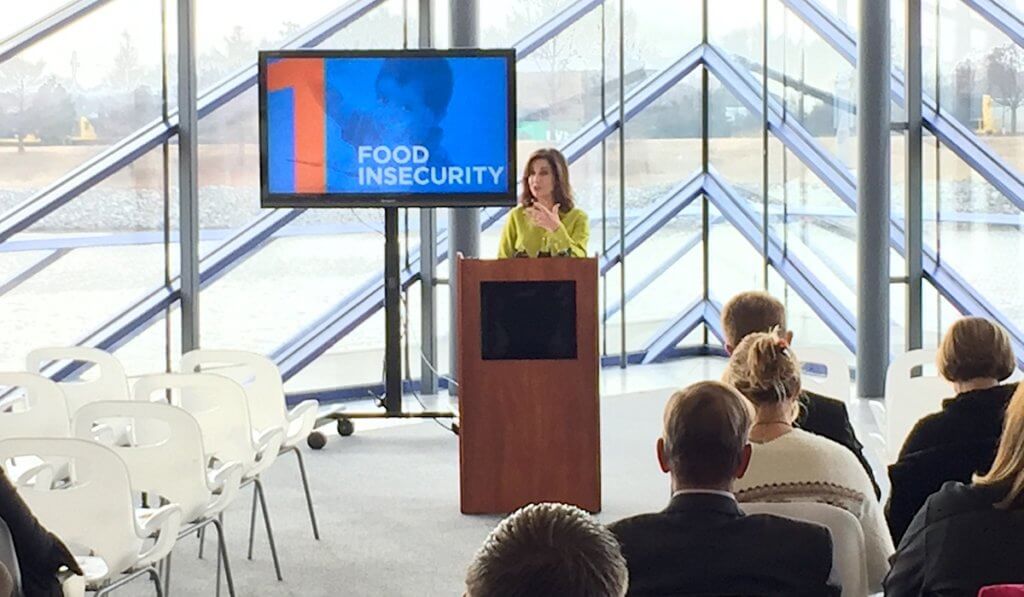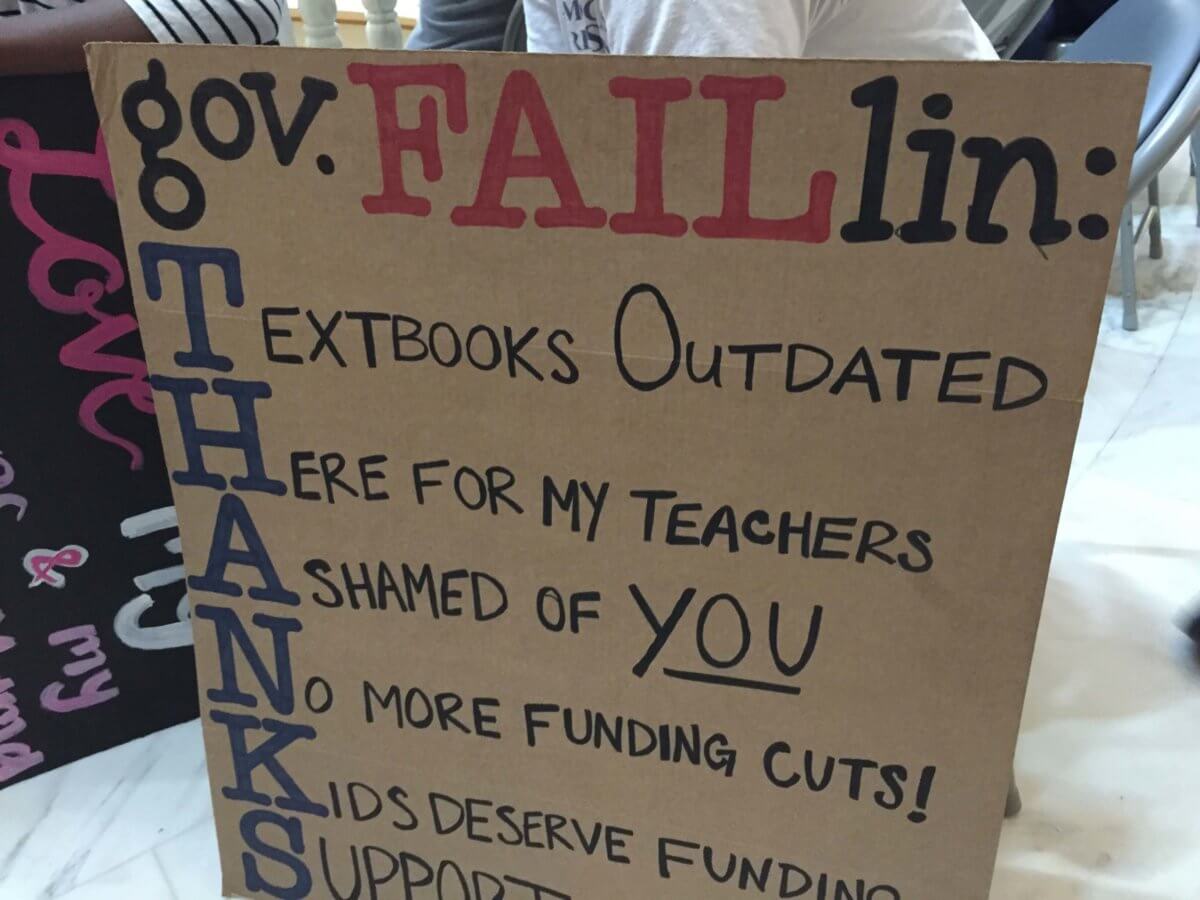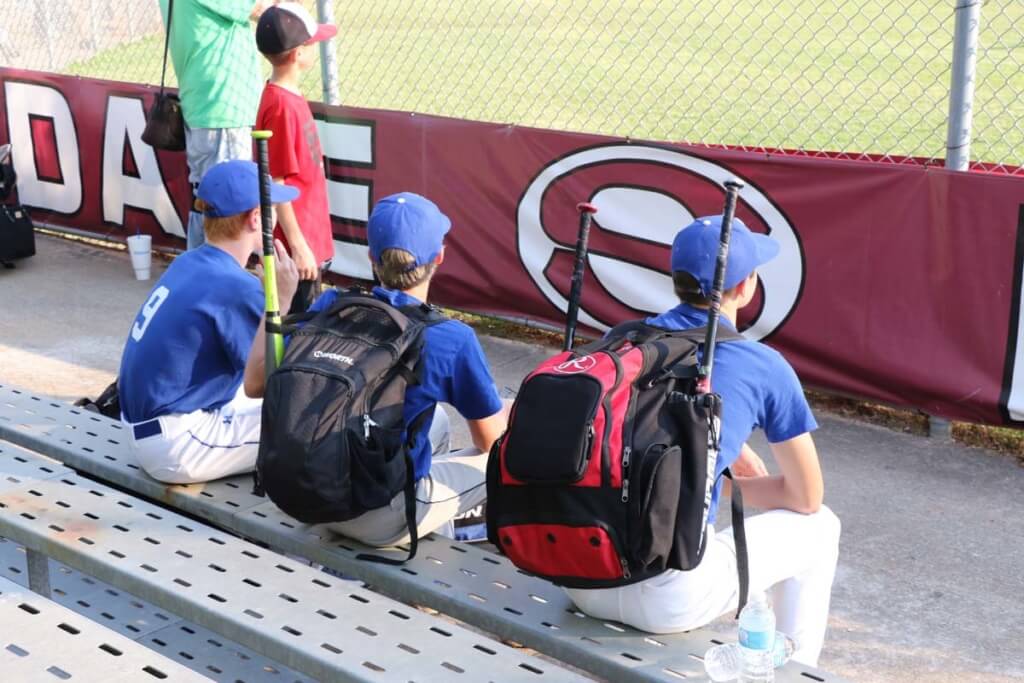
In politics, like life, there are big and small narratives. Amid seven-straight school days’ worth of rallies at the Oklahoma State Capitol, the big push to gain greater respect — and funding — for the state’s teachers has also brought to light interesting questions about testing, textbooks, athletic competitions and school bonds.
Below are local news stories from Oklahoma that touch on those four areas of education policy. Each serves as evidence of how public education is a fascinatingly complicated system that will always deserve public discussion.
Testing

Oklahoma Superintendent of Public Instruction Joy Hofmeister announced Monday that she was extending the windows for federally mandated testing owing to the ongoing walkout. Sean Murphy of the Associated Press wrote this thorough story on the topic, but, in an interview late Monday, Hofmeister explained how the federal government’s testing requirements are even more complex.
The PDF below represents the state’s “revised” testing window, which Hofmeister said is simply a reflection of the grace period built into state contracts with testing entities. Most tests must be completed by April 27, with many grade levels facing multiple examinations that sometimes require consecutive days of assessment.
 Loading...
Loading...
“Those are hard deadlines,” Hofmeister told NonDoc. “We have depleted our allowance for the extension. Regardless of circumstances, districts have a certain window that is defined and obviously has been extended one week, but they must meet that obligation. But how they do that is up to each district.”
Emphasizing her department’s communications with individual districts, Hofmeister said about 80 percent of Oklahoma high schools have already administered the 11th-grade ACT. She noted that, ultimately, all tests must be completed at a higher rate.
“That is related to a need to reach 95-percent participation, both in their school and in the district. (That applies) for each of those grades and the subject test, and even the smaller breakdown of certain identified student groups that are part of federal accountability. An example would be special education. Or English learners, etc.,” Hofmeister said. “But then we also have to achieve 95 percent as a state average for each of those grade levels and subject tests within those grade levels.”
Hofmeister said that if any of Oklahoma’s 512 school districts or the state in general fails to meet the 95 percent threshold, U.S. Secretary of Education Betsy DeVos could take punitive action much like districts in Washington state and Washington, D.C., have faced in the past.
“We will have incurred some form of penalty that could involve a monetary penalty. It could also change the autonomy about making decisions on how we spend federal money in the future. That could include less flexibility for the local school district and state and mean more federal control,” Hofmeister said. “It is a serious matter with potentially serious consequences. In federal funding, we get nearly $700 million. Title I dollars are most at risk, and that is about $160 million.
“We cannot afford to lose one penny that our students deserve.”
Textbooks

During Oklahoma’s teacher walkout, social media posts and news stories about old and tattered textbooks have circulated widely. One elementary student in Ada found a textbook from 1980 that country music star Blake Shelton apparently used in 1982. Separately, a photo posted on Twitter also raised eyebrows and drew outrage for purportedly showing an eighth-grade history textbook from Owasso lacking a cover or spine.
But NewsOK.com’s Chris Casteel reached out to Owasso administrators who quickly called the photo “far-fetched” and “absolutely not accurate.”
“It’s an example of the power of social media over reality,” Owasso assistant superintendent Amy Fichtner said.
Oklahoma gubernatorial candidate Gary Richardson — who released a statement Friday critiquing the walkout for what he called alignment with union-backed political positions — criticized Owasso Public Schools for a recent bond initiative that included $4.7 million to expand administrative offices — more than twice the $2 million bonded to purchase new textbooks.
As national media publicized the purported Owasso book sans fact checking, political posturing around the textbook issue is likely to continue. That could further obfuscate discussions about textbook funding in the state, which had been listed as a line item in Oklahoma education budgets until 2016.
At the time, Hofmeister expressed surprise and frustration about the removal of the line-item for textbook funding. Then-House Speaker Jeff Hickman, a Republican from Alfalfa County who now serves as a member of the Oklahoma State Regents for Higher Education, said the line item was removed to meet district requests for greater financial flexibility.
“Education leaders, including Superintendent Hofmeister, made it clear to us this session that schools wanted more money directed through the funding formula so schools will have more discretion and flexibility,” Hickman said in a June 2016 article by NewsOK.com’s Tim Willert. “The funds didn’t go away. Schools are still receiving the money that would have been line-itemed for textbooks, but now they have greater discretion to use those dollars for more pressing needs at the local level or to buy new textbooks.”
The line-item for textbook dollars has returned for next fiscal year’s budget as part of additional funding passed by the Legislature at the end of March.
Sports

While many of Oklahoma’s largest school districts have cancelled classes as teachers advocate at the Capitol, districts have mostly continued with scheduled athletic events. To some, the fact that districts have shut down classrooms but have continued extracurricular activities seems awkward.
“I do recognize the optics,” said Hofmeister, who noted that spring sports have already made financial commitments to host playoff events at various fields at specific times. “As it’s described to me, it is very important to our district leaders that they insulate their students from the loss of qualifying for scholarships.”
Hofmeister listed speech and debate, music competitions and even advanced placement testing as other instructional opportunities that many districts are continuing.
“Most importantly, we want our students to have uninterrupted learning, and we want our students to be able to finish the school year strongly,” she said. “That will be our focus, and we will continue to do everything we can to make sure our students can finish these assessments and finish the year strongly.”
At least one teacher has spoken out publicly about athletic competitions continuing while classroom learning has been paused.
“It doesn’t feel morally and ethically right to coach while the walkout is going on,” Yukon tennis coach Barney Moon said in a NewsOK.com article from Adam Kemp. “I think we are sending the message that athletics are more important than education by continuing to play and practice. I think it’s time to walk out on athletics, too.”
More than a week before the walkout began, Clay Horning of the Norman Transcript wrote a commentary discussing the potential optics – either good or bad – if the Oklahoma Secondary School Activities Association either took or didn’t take action to adjust spring sport seasons accordingly.
For his part, Moon notes that halting his athletic duties has been the hardest decision of his coaching career.
“This is my small, personal movement, but I’m hoping it won’t be for long,” Moon said.
Bonds
In various discussions at the Capitol and on social media, some educators and onlookers have questioned why certain school buildings are nice while some need repairs. That discussion has drawn criticism of the Legislature, but districts typically finance construction projects either through their building funds or the issuance of bonds that raise community property taxes.
“I’ve had (people talk about) everything from buildings to bathroom sinks to classroom desks and whatnot,” House Majority Leader Mike Sanders (R-Kingfisher) said of recent Capitol conversations with educators. “As much as I understand their frustration, that’s more of a local control issue as opposed to having the state fund that.”
Sanders noted that Oklahoma’s large number of school districts results in regular votes across the state on school bonds, which require 60 percent voter approval to pass.
“When you talk about buildings and things of that nature, all of that is handled at the local level and with the school boards and the superintendents. Those needs are met by passing bond issues,” Sanders said. “That’s how schools are able to build onto their building. They have a building fund as well. But to do mass projects, that’s a way they can fund and get their buildings built.”
On Tuesday, April 3 — the second day of the school walkout and less than a week after legislators passed about $450 million in new state taxes for education funding — six Oklahoma school districts held votes on bond proposals. Three districts passed their new bonds while three districts did not.
All three proposals within Sanders’ district failed to receive the 60 percent support necessary for passage. Sharon-Mutual Public Schools’ bond received 58 percent support, and two proposals for Woodward Public Schools received only 49 percent and 54 percent.
“It’s highly volatile right now. Taking my school districts that had those bonds that failed, I think you could see this as more of a statewide problem going forward,” Sanders said. “I think there’s a disconnect between the general public and the issues we’re dealing with.”
In a story that quoted Woodward Superintendent Kyle Reynolds as saying “a number of factors influenced the vote,” the Woodward News summarized the two failed WPS proposals:
The Woodward School District was asking its patrons for $6.5 million to provide for improvements in the arts and athletic facilities in its schools, including renovations to the middle and high school auditoriums, the Woodward Middle School band room and the Family and Consumer Science room and equipment would also be updated.
In addition the proposal included upgrades to the high school athletic facilities, including installing artificial turf on the football field and building a new eight lane track.
Also a part of the bond request were funds for continued investment in the One-to-One initiative, a program that provides each student an educational iPad with connections to textbook information for teaching curriculum – a need since several years ago, funds for books were cut, school officials said.
In a separate $500,000 bond, Woodward School District asked voters to support continued funding for its transportation program to provide updating of yellow school buses.
Rock Creek Public Schools in the southeast Oklahoma communities of Blue and Bokchito only saw 47 percent of voters favor its bond issue. Meanwhile, the following districts passed their bonds:
- Comanche Public Schools (79 percent and 81 percent),
- Indiahoma Public Schools (78 percent)
- and Sperry Public Schools (80 percent on two proposals).
“I think a lot of people don’t quite understand that local school districts have a major responsibility to fund the functionality of a school,” Sanders said. “We as a state can only do so much, and this year obviously we’re putting $2.9 billion into the overall budget for education. But the upkeep of the district and the building fund and those things along those lines, that has to be controlled and maintained at the local level.”





















